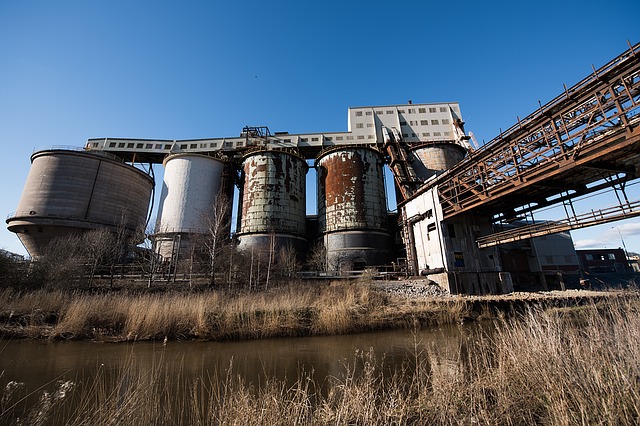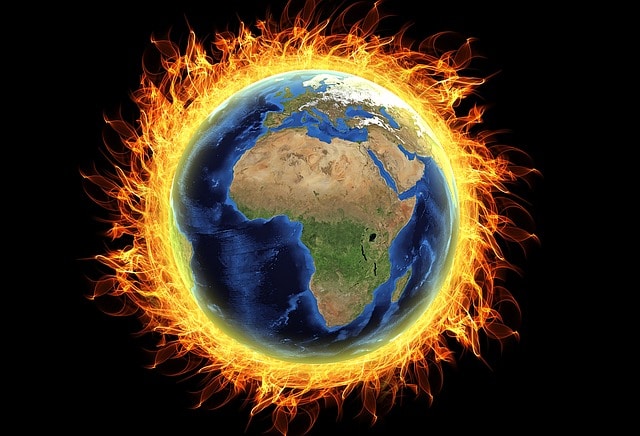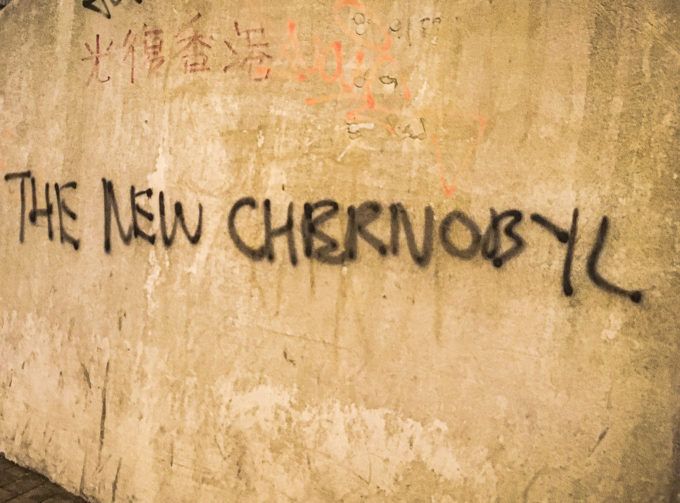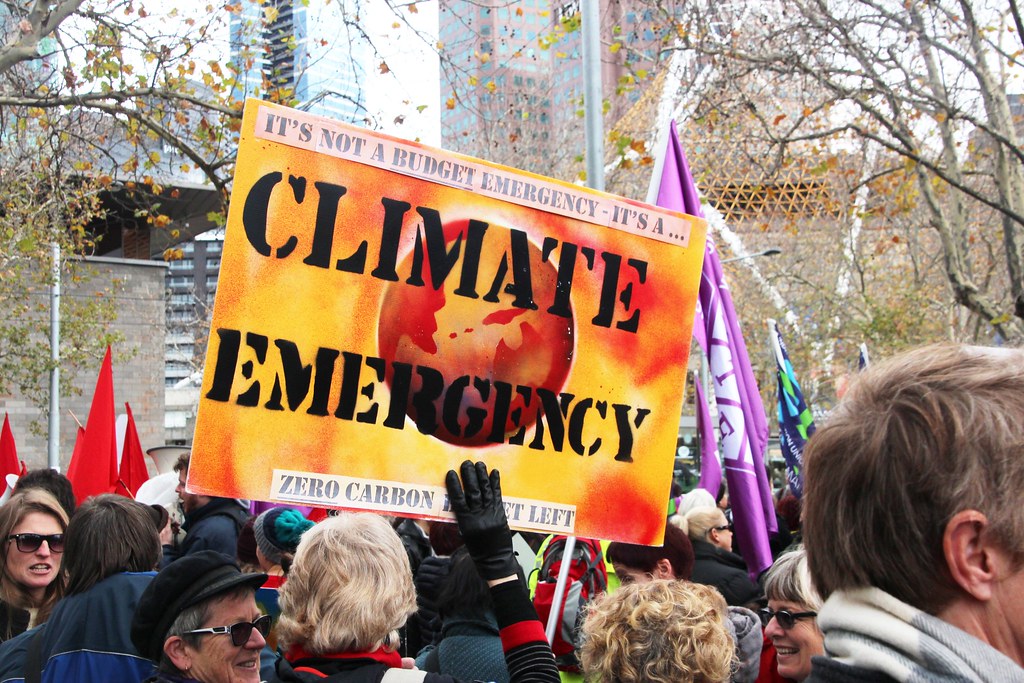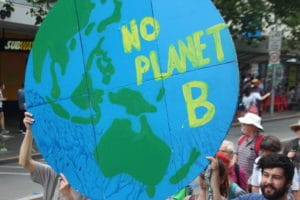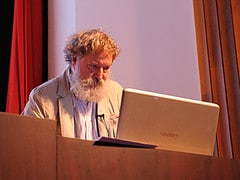Toxic Chemicals Engulf the Planet
by Robert Hunziker
[This article was first published in CounterPunch on June 11, 2021.]
Worldwide toxic chemicals are six times global warming emissions. This hidden dilemma is fully exposed in a superbly researched new book by science writer Julian Cribb: Earth Detox, How and Why We Must Clean Up Our Planet, Cambridge University Press, scheduled for release August 2021.
The planet has become a toxic soup of tested, untested, and inadequately tested chemicals that includes deadly toxins. Within only a couple of generations, and largely unnoticed, this startling episode is unique to our generation. Far and away, it exceeds global warming emissions. Yet, it’s a pressing issue that’s not publicly recognized as such.
Earth Detox is an eye-opening exposure of unintentional toxic chemical warfare lodged against humanity virtually everywhere, all over the planet. Throughout this challenging subject matter, Cribb’s work is supported by extensive scientific data, for example: “Americans are a walking cocktail of contaminants.” That statement alone is provocative enough to demand more facts, a whole lot more. For example, why and how has American life been reduced to such a degenerative status? More on this to follow.
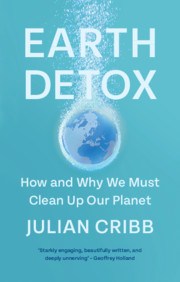
It’s a compelling invisible issue. What else in the world accounts for 25,000 daily deaths?
Yet, across the globe there are no signs of concern, no long banners flapping in the breeze on Main Street, no NGOs, no marches, no petitions, no pesky fund-raisers, no signature gatherers at grocery store parking lots, no public demonstrations of concern about this hidden peril found throughout the planet from the top of Mount Everest, where researchers, to their dismay, discovered toxic compounds in-excess of EPA standards, to the bottom of the Mariana Trench, where small crustaceans that live in the pitch-black waters of the trench, captured by a robotic submarine, were contaminated with 50 times more toxic chemicals than crabs that survive in heavily polluted rivers in China.
Still, society fails to address this most pressing issue of the 21st century. According to Cribb: “A worrisome component of the poisoning of the planet is the absurd fact that modern society exists and functions as a result of these poisons. For example, industrialized food production uses five million tonnes of specialized poisons to control weeds, insects, rodents and moulds to feed the world.” Here’s the kicker, the vast majority of the chemicals used to produce food negatively impact “non-target organisms,” like honeybees, farm workers and consumers.
Cribb has produced a landmark study that demands further analysis and investigation at the highest levels. It belongs on reading lists of every educational institution and in the hands of policymakers as well as consumers worldwide. Cribb’s gifted science-oriented prose provides an ideal fundamental resource for: (1) supplemental textbooks (2) advocacy groups (3) policymakers (4) critical information for every householder in the world to better understand what’s at stake in everyday life. For example: “Never eat any food containing a substance you can’t pronounce or you don’t trust.” (pg. 67) In other words, read the damn labels!
Earth Detox is truly a masterpiece of deeply researched facts exposing a very, very big story, as big as the survival and condition of Earth’s basic resources that support existence. An opening statement in Cribb’s own words sums up the extent: “Earth and all life on it are being saturated with chemicals released by humans, in an event unlike anything that has occurred ever before, in all 4 billion years of our Planet’s story… Ours is a poisoned world… this has all happened quite quickly and has burgeoned so rapidly that most people are still unaware of the extent or scale of the peril… crept up on us unseen… in a social climate of trusting acceptance of authority, over barely the span of a single human lifetime… impacts are only now starting to emerge.” (pgs. 3-4)
Accordingly, a 2020 study by a team of international scientists led by Switzerland’s Institute of Environmental Engineering: “Over 350,000 chemicals and mixtures of chemicals have been registered for production and use, up to three times as many as previously estimated… identities of many chemicals remain publicly unknown because they are claimed as confidential.” (pg 7)
The Swiss study is the world’s first-ever compilation of global chemical inventory and surprisingly discovered three times previous estimates, which speaks to the lax governance issue, nobody really knows for sure what’s going on, three times previous estimates is evidence of failure to observe. The study uncovered “widespread secrecy, misidentification and obfuscation,” leading to a question of who effectively monitors this darkened world that ultimately reaches into everyone’s home?
It’s the vastness and fragmentation of worldwide manufacturing that makes regulation so difficult. After all, one thousand (1,000) new chemicals are added to the mix every year. The chemical industry is the second largest manufacturer in the world, totaling 2.5 billion tonnes each year.
Yet, according to Cribb: “Regulation has so far banned fewer than one per cent (1%) of all intentionally made dangerous chemicals – and then only in certain countries… large parts of the world’s most polluting industries are relocating away from countries where high standards of regulation and compliance, and high costs, apply.” (pgs. 191-92)
All of which conforms to economic dicta following post-Reagan globalization schemes subsequently embraced by neoliberalism’s penchant for weakening regulations and powerfully goosed ahead via massive deregulation under the Trump administration’s “intentional collapse of scientific wherewithal,” one of America’s darkest hours.
Indeed, chemical usage is an ever-present quandary that’s a challenge to navigate if only because so much of it is necessary in today’s world, leading to one of the great paradoxes of all time, a virtual “Catch-22”: “Man-made chemicals are so widespread in the world today because they are very useful, very valuable, very profitable and help to enhance billions of lives. They are central enabling technology in the modern global economy. They are never going to be universally banned – and nor should they be. But neither should they flood the Earth uncontrolled. The magnitude of our chemical – especially toxic chemical – exposure has crept up on the human population unawares.” (pg. 192)
Cribb has created nomenclature for the chemical epidemic: Anthropogenic Chemical Circulation (“ACC”). “The ACC is just like our carbon emissions – only much bigger and far more noxious… For the first time in the Earth’s history, a single species – ourselves – is poisoning an entire Planet.” (pgs. 20-21)
ACC aptly defines the risks: Man-made chemicals are always on the move constantly in space and time, all around us, traveling on wind, in the water, attached to soil, within dust and plastic microparticles, in traded goods. Chemicals stay with us forever reforming, recycling, recombining, and reactivating as part of an unending planetary river, the Anthropogenic Chemical Circulation. Nothing escapes toxic pollution: “Even the mud on the sea floor is becoming poisonous.” (pgs. 35-37)
Polluted People
It is highly likely that readers of Cribb’s exposé will have been exposed to toxic chemicals without knowing it. You only know, or suspect, after something goes wrong, like cancer or Alzheimer’s but by then forgetfulness masks the original cause/effect.
According to Cribb: “A chilling glimpse of the big picture comes from the USA, among the heaviest chemical users on the Planet. For more than two decades its Centers for Disease Control (CDC) has run a national survey of chemical pollution in the blood, serum and urine of up to 2500 Americans every year.” (pg. 53) The survey reveals: “Americans are a walking cocktail of contaminants. The CDC readily admits that the health effects of many chemicals are not yet clear. WHO says the number of chemicals is ‘very large’ and health risks ‘are not known… Ipso facto, never eat any food containing a substance you can’t pronounce or you don’t trust.” (pg. 67)

The modern industrial food supply chain, from A to Z, is loaded with chemicals. For starters, pesticides used to grow food and livestock end up in human bodies one way or another, and in high enough concentrations proven to influence cancers, brain, nerve, genetic and hormonal disorders, kidney and liver damage, asthma and allergies. Besides pesticides, some 3,000 chemical food ingredients are permitted by the FDA used to enhance freshness, taste, and texture. Preservatives, for example, which extend shelf life, are chemicals that poison the bacteria and moulds that cause food to rot. “Common chemical preservatives such as sodium nitrate and nitrite, sulphites, sulphur dioxide, sodium benzoate, parabens, formaldehyde and antioxidant preservatives, if over-consumed in the modern processed food diet, may also lead to cancers, heart disease, allergies, digestive, lung, kidney and other diseases and constitute a further reason for avoiding or reducing one’s intake of ‘industrial food’.” (pg 70)
By all appearances, based upon Cribb’s extensive research, the Industrial Food Frankenstein, which traverses pesticide-laced farmland-to-artificial (toxic) plastic packaging-to-home refrigeration, given enough time, kills or cripples wide-eyed consumers. There’s little middle ground with industrial foodstuff.
It should be noted, aside from Cribb’s book, a major Rand Corporation study shows “sixty percent (60% or almost 200 million) U.S. adults have at least one chronic condition, 42% have more than one, and 12% have five or more,” e.g., high cholesterol, high blood pressure, anxiety, arthritis, heart disease and diabetes. Whereas, European chronic conditions at 30% are one-half the U.S. on the same timeline as the Rand study. Thus, connecting the dots, it brings to mind whether adverse conditions, like excessive exposure to toxic chemicals, cause chronic conditions?
“Interestingly, Europe only permits the use of 400 food additives out of 3000 permitted in the US. Essentially, Europe has banned 4/5ths of the chemicals allowed in the US food chain. Europe outlaws any chemicals that do not meet its criteria for “non-harm to humans or the environment.” (pg. 73)
“It is important to remember that the universal penetration of man-made chemicals into the food chain has mainly happened in just the last half-century. No previous generations were subjected to such a wholesale chemical exposure.” (page. 76) “There could be anything up to 16,500 different chemicals in the modern food chain today that simply weren’t a part of your grandparents’ diet.” (pg.90) That one sentence says it all in less than 25 words with an underlying message: Avoid industrial food. Eat fresh food.
A major test of a family of five in San Francisco that ate industrial packaged food for a period of time followed by a diet of fresh food for a comparable period of time showed significant reduction of toxic BPA (used to make plastics) and phthalates (used to make household goods) of 67% to 90%, which is extraordinarily meaningful. (Source: Earth Detox) (According to Mayo Clinic, research shows BPA may be directly linked to high blood pressure, diabetes, and cardiovascular disease. Phthalates makes plastics more durable used in hundreds of household products and can damage the liver, kidneys, lungs, and reproductive system)
Unfortunately, the full scale of the impact of toxic chemicals to humans is not yet fully understood by science, not by governments, not by industry and not by communities. However, numerous studies show mixtures of chemicals connecting dots to cancers, autism and several other diseases. “We are, every one of us, the ‘laboratory rats’ in a vast worldwide chemistry experiment involving an immense cocktail of substances, over which we have neither say nor freedom of action. It is an uncontrolled global experiment that defies the very ethics which outlaw the scientific testing of mixture toxicity in humans.” (pg. 96)
“While global chemical use is forecast to intensify, growing by around 3 per cent per year up to 2050, the world’s ability to regulate and restrict it is weakening… The main reason for this is that, in their efforts to evade regulators, chemical corporations are winding back their operations in the developed world and moving to more poorly regulated countries, mainly in Asia. In the first two decades of this century, chemical output in Asian countries grew three to five times faster than in North America and Europe.” (pg. 196)
Earth Detox offers solutions. Here’s one: “A core finding of this book is that we must build a Global Detox Alliance… Such an alliance would not engage in consumer bans or boycotts, physical confrontation, lawsuits or other direct action against industry or science; to do so will only entrench mutual mistrust and opposition, delay the move to clean production and drive industry into greater secrecy and into unregulated parts of the world. Clean up will do best if founded on principles of co-operation, consensus, openness and equality between society, industry and government.” (pg. 236)
Above all else, readers of Cribb’s fact-filled gem must read the Postscript: “A Cautionary Tale From Deep Time,” which is an extremely intriguing very thought-provoking detailed description of how life on Earth originated, from day one, with some surprising results along the way. Don’t miss it. After all, who doesn’t wonder about the wonders of life’s creation?
Postscript: Ours is a poisoned world… this has all happened quite quickly and has burgeoned so rapidly that most people are still unaware of the extent or scale of the peril… crept up on us unseen… over barely the span of a single human lifetime… impacts are only now starting to emerge. (Julian Cribb)
Someday we shall look back on this dark era of agriculture and shake our heads. How could we have ever believed that it was a good idea to grow our food with poisons? (Jane Goodall, Harvest of Hope, 2005)
Annotation: The quotes with page references in this article come from the publisher’s “Proof” and may not conform to the final book publication.
[Note: Feature image – Chemical plant industrial facility, i]
Based in Los Angeles, Robert Hunziker is a freelance writer and environmental journalist whose articles have been translated into foreign languages and published in over 50 journals, magazines and sites worldwide.
